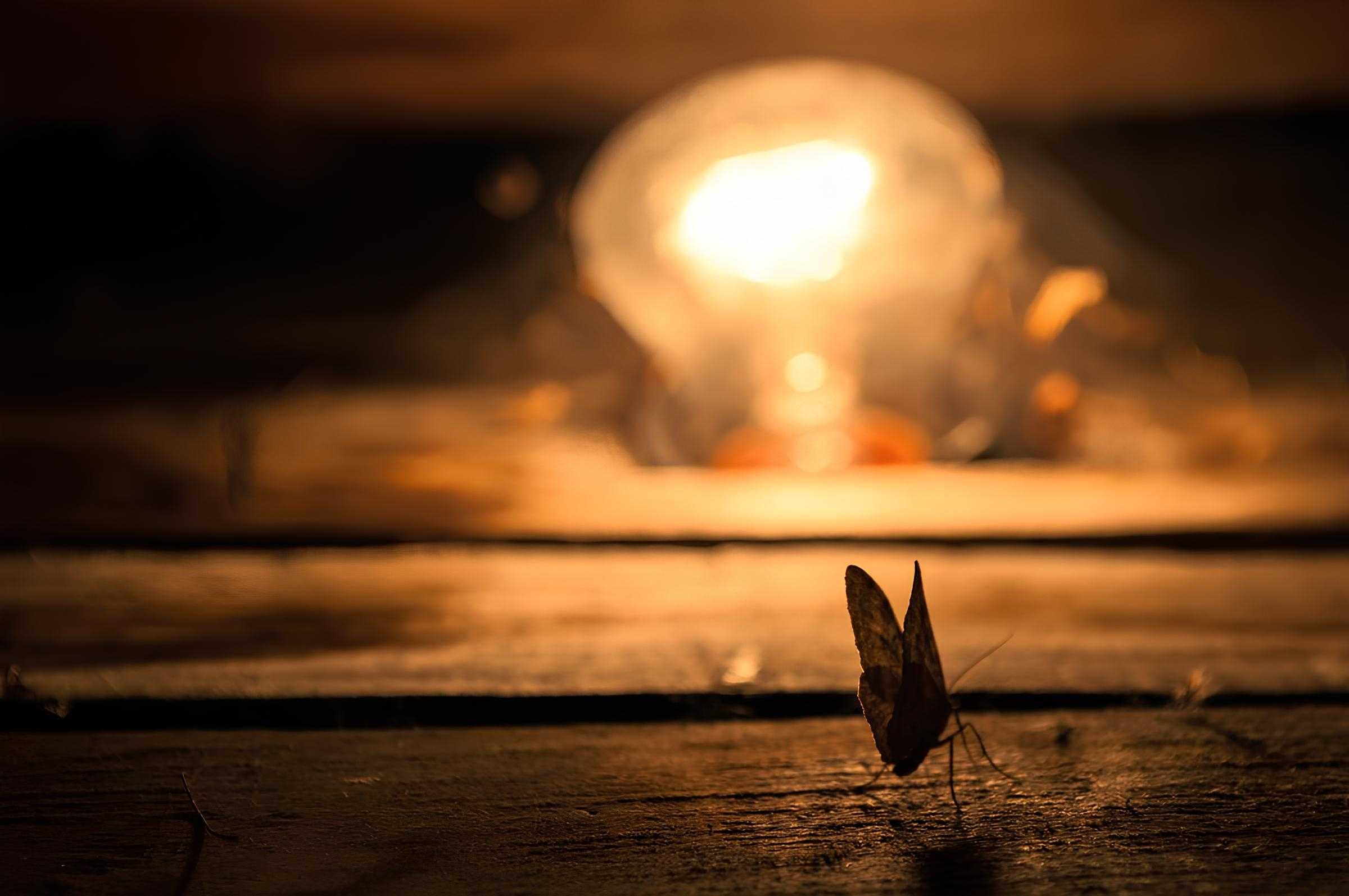During the night, numerous gnats, butterflies, and various beetles can be witnessed whirling around the lamp posts. Even within our abodes, the mere act of illuminating a lamp results in an influx of insects congregating near the light bulb. However, the reason behind their intense attraction toward these light sources remains perplexing. They jeopardize their wings by coming dangerously close to the fiery heat, subject themselves to the threat of electrocution, and even face the possibility of being squashed against the luminosity of a car’s headlights.
Artificial Light Confuses Insects
The query remains an enigma puzzling entomologists. As per an initial hypothesis, insects could be mixing up the man-made illumination emanating from street lamps with the radiance of celestial entities, particularly the Moon, employing it for orientation. Due to the heightened intensity of artificial illumination, these hapless insects unwittingly dart towards it, losing their sense of direction entirely. This leads them to orbit persistently around the luminous bulbs until fatigue overcomes them, culminating in their descent to the earth, where toads and other rodents lie in wait patiently for their arrival.
An alternate complex idea pertains to insects linking light with security. In a forest, if they need to escape a predator, they look for a gap in the canopy. One undeniable fact is that our illumination sources are accountable for significant fatalities: each night, numerous insects meet their demise or become preyed upon in the vicinity of individual lampposts.
Blue light and Orange Light
During the 1970s, streetlights were adorned with sodium bulbs, emitting an orange glow that is theoretically less appealing. Nevertheless, in the present day, LED lights are becoming increasingly favored owing to their energy-conserving benefits. However, their bright white illumination noticeably disrupts insects. It’s important to highlight that mosquitoes don’t require a illuminated lamp to approach you directly; they chiefly depend on personal scents and the release of CO2.
Why Are Insects Attracted to Light?
Positive and negative phototropism
Certain insects, like midges, exhibit a pull towards light, referred to as “positive phototropism.” This inclination might trace back to their evolutionary roots, where attraction to the moon or stars aided their movement. However, other insects, such as moths, exhibit an excessive attraction to artificial light, disturbing their natural conduct and exposing them to peril from predators.
Disrupted visual navigation
Nocturnal insects commonly rely on natural cues like the moon and stars for navigation. Man-made lights can disarray these guiding marks, leaving insects bewildered. In particular, light bulbs can be remarkably luminous compared to other natural light sources, leading to bewilderment in insect navigation.
Disturbed communication
Insects also employ light for interspecies communication, especially during mating. The presence of artificial lights can intrude upon these communication signals, prompting inappropriate actions.
Intense visual allure
Artificial lights, especially in darkness, stand out distinctly against their backdrop. This distinctiveness renders them especially appealing to insects, which are finely attuned to light fluctuations.
Ecological pitfall
For light-attracted insects, artificial lights can turn into a fatal snare. Insects circling these lights can eventually become fatigued or ensnared by predators, potentially impacting the local insect population.
